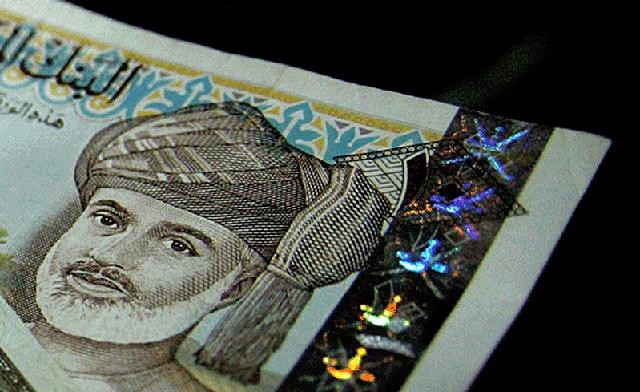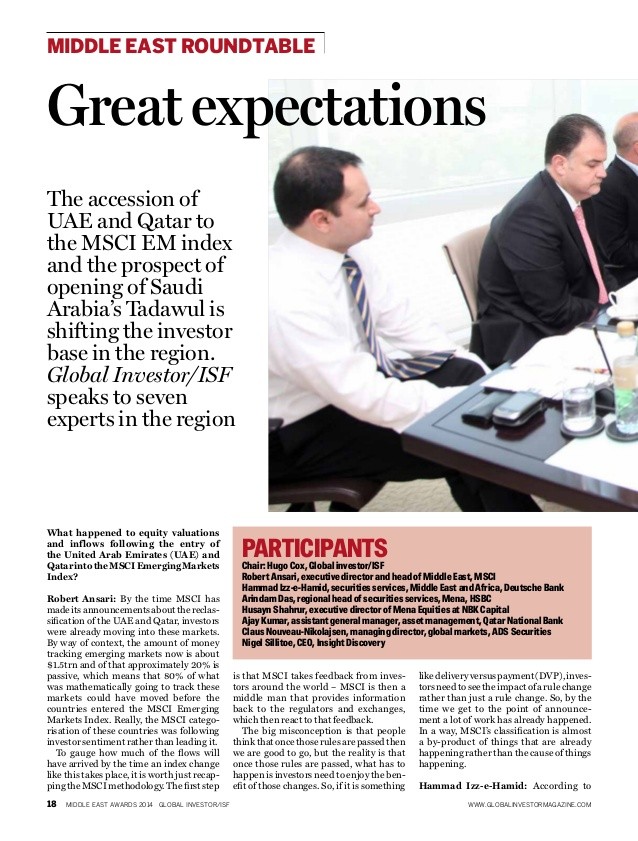Rasmala Regional investors suffer due to loss in key markets in August
Post on: 16 Июль, 2015 No Comment

Rate Article:
*. All returns are latest available end of day August 31 2008.
The negative sentiment that started to appear in regional markets in July accelerated in August to make it one of the worst months for MENA markets investors. The close to 4.30% loss for the broad market index masked much higher losses in key markets such as the UAE, Egypt and Qatar. Supporting the index was the relatively good performance of the Saudi market which ended the month unchanged after news of new CMA regulations to liberalise and regulate non-GCC investors access to publicly traded Saudi stocks reversed the large losses of the first 2 weeks of August.
Several factors conspired to make this a very difficult month for regional investors. The very low volumes typical for the summer season had the effect of exaggerating market movements and there was a marked increase in volatility. Signs of some foreign money leaving the UAE, Qatari and Omani markets, amidst extremely low liquidity, led to drastic falls in these markets. A spate of negative publicity on the all-important Dubai real estate market further fuelled the negative sentiment leading to a free fall in well regarded and widely held stocks. In addition, funding costs around the GCC have been increasing as foreign and domestic investors who had been betting on an imminent revaluation higher of GCC currencies have all but given up for the time being and foreign exchange markets are now not forecasting any appreciation or adjusting of the Dollar Peg.
Saudi Arabia
It was very much a tale of two halves for this market during August. The market started off the month on a weak note as large domestic investors reacted negatively to news that the exchange would publish names of shareholders with stakes of 5% or more in listed firms to boost transparency. Ahead of the implementation of this regulation, the Saudi index plunged for two consecutive days by around 7%. A quite remarkable turnaround then ensued with the market registering nine consecutive positive sessions to advance by more than 12% from its lows and register a small positive performance for the month.
Key to the dramatic turnaround was the Capital market Authority (CMA) decision to allow foreigners (non GCC investors) to enter into equity swaps on individual Saudi stocks with CMA approved firms. These swaps would give investors the economic gains and losses from their investment but without the voting rights normally associated with equity investing. We see this as a positive and well thought out regulation that will serve as an important catalyst for this key market. Domestic investors were energized by this development making the tone in the market markedly brighter than the first half of the month. Valuations in the Saudi market are currently at reasonable levels and a healthy profit reporting season after the Ramadan and Eid period will ensure a good 4 th quarter for the largest MENA market.
UAE
The Dubai Financial Market (DFM) suffered several heavy sell-offs during the month and ended the month 11.88% lower making it the worst performing regional market over the month. Real estate shares in particular witnessed a volatile trading month with losses in some leading stocks reaching 25%. A Morgan Stanley report calling for a small correction in residential home prices in Dubai over the next two years was very poorly received by the market and seemed to be the catalyst for some foreign investors to reallocate money away from the market. Given the seasonally low trading volumes, this had an exaggerated effect on trading patterns and prices. Further damaging sentiment was the news of several high profile corruption investigations revolving around present and previous management of leading private and public real estate firms. We see these investigations as a positive development on the path of increased transparency and improved corporate governance but investors are awaiting more details and are choosing to stay away from the market for the time being.
The Abu Dhabi market was unable to shrug off the negative sentiment and ended the month 11% lower. Trading patterns were quite similar to the DFM with real estate stocks taking the brunt of the sell-off from foreign and domestic investors. Liquidity was very low and domestic investors were unable or unwilling to counter a spurt of foreign selling. Besides real estate stocks such as Aldar and Sorouh, banking stocks also came under pressure with National Bank of Abu Dhabi losing all its year-to-date gains and slipping into the red and previously high flying First Gulf Bank losing over half of its 35% year-to-date gain, as investors feared that any slowdown in the real estate sector would put a damper on profit growth. In addition, funding costs have been increasing as foreign and domestic investors revise their expectations for any imminent currency revaluation leading to an outflow of liquidity from the banking system while demand for credit remains very high.
The losses of the past month have made valuations of listed UAE stocks the most attractive in the region and beyond and several market leaders are trading at multiples of below 10 times earnings. It is difficult to see what the catalyst to unlock the considerable value would be as sentiment remains very weak. The period after Ramadan will coincide with the release of third quarter 2008 earnings and will be important in determining the direction of these markets over the course of 2008.
Kuwait
The Kuwaiti equity market continued its downtrend during August but nevertheless fared better than most other regional markets and cemented its position as the best performing GCC market in 2008. Trading volumes were low as most large investors were absent from the market and trading was primarily centered on small-cap stocks popular with small retail investors. Selling pressure was evident on large caps National Bank of Kuwait, Kuwait Finance House and National Industries Group with losses ranging from 3% to 11% as investors raised cash to participate in upcoming rights issues such as Zain and National Industries Group capital increases of USD 4.5 billion and USD 594.7 million respectively. In addition, logistics heavyweight Agility saw its shares dropping by 8.77% following disappointing second quarter earnings, pulling the Kuwaiti index further down.

Kuwait Telecommunication Co. which started its IPO August 24th hasn’t been able to attract a large number of subscribers which may be a sign of dwindling liquidity and interest in the market.
The Kuwaiti market has proven its defensiveness during the recent weakness in regional markets which reaffirms its important diversification benefits within a regional investment portfolio. While valuations remain attractive at around 12 times expected earnings, its discount versus other regional markets is diminishing and its profit growth is expected to be lower than markets such as the UAE and Qatar.
Qatar
The Doha Securities Market continued its negative trend for the third consecutive month, failing to sustain its level above the 11,000 mark as investors continue to book profits across board. The index was mainly undermined by losses in Banking and Services shares, namely large cap Qatar National Bank and Qatar Islamic Bank, in addition to weak performances from Qatar Telecom and Qatar Gas Transport Co. Real estate shares also traded lower in sympathy with the negative trend in UAE property shares with Barwa Real Estate closing the month down by almost 11%. Foreign and domestic investors realized some of the large profits recorded over the past few months, pushing the Qatari index to fall below the 10,500 level for the first time since April to end the month down by 10.2% on panic selling as investors rushed to liquidate their positions in a very thin market.
These losses have improved the valuations of the Qatari market to around 16 times forward earnings which can be considered reasonable in light of the expected economic and corporate profit growth. A limited supply of stocks and foreign ownership restrictions will serve to keep a good level of demand on leading stocks and support the market in the medium term.
The Omani market had another disappointing performance during August as some foreign selling led to local investors panicking. Large losses on heavyweights National Bank of Oman, Omantel and Galfar Engineering pulled the Omani index below 9400 before a small recovery towards the end of the month. Nevertheless the market ended up losing over 11.5%, making this its worst monthly performance in over a decade. The past months losses should be seen primarily in the context of profit taking after the almost uninterrupted rally of the past close to 2 years.














